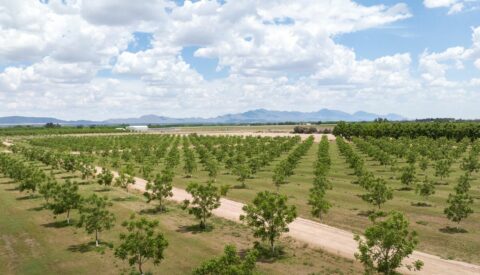By Don Close, Executive Head Emeritus Carcass weights have become a double-edged sword for cattle feeders and a bottleneck for the industry. For the week of September 21, steer carcass weights were a new seasonal record at 948 pounds, 30 pounds over the same week’s average a year earlier. We are easily on pace to set a new record later this year. In contrast, year-to-date fed cattle slaughter is down 4% from a year ago and cow slaughter is down 16%. The escalation in carcass weights, however, is fully offsetting the decline in slaughter. Beef production is off by just 1%. Packing on the Pounds A number of factors are driving the escalation in weights. First, today’s cattle have the genetic firepower to carry heavier weights. Second, cattle feeders are pushing as many pounds of gain as possible in an effort to lower break-even costs (see Chart). Today’s finished cattle were purchased as high-priced feeder cattle. Third, cattle feeders are pushing cattle as close to the packers’ 1,100-pound cap as possible or before too many cattle are discounted because of yield grades 4 and 5. By feeding to the heavier weights, cattle feeders are attempting to push the number of carcasses into the upper two-thirds of Choice and Prime to capture the most grid premiums as possible. Fourth, the swap of replacing the current cattle on feed with fresh placements is totally in favor of feeding the existing fat cattle additional days. And the incentives to put on additional pounds are just too great to resist even though all participants can see the damage being done to the market. Fifth, cost of gain is currently in the range of $0.95/lb. to $1.10/lb., and the value of gain is $1.80/lb. to $1.85/lb. In short, cattle feeders are getting just shy of a 2:1 return on all the pounds they can pack on, and the incentives to put on additional pounds are just too great to resist even though all participants can see the damage being done to the market. From my perspective, no one can walk away from the incentives in spite of harm to the broader market. What’s Inflating the Cattle-on-Feed Total The market continues to voice frustration over how the total number of cattle on feed can continue to hover at just over 100% of year-earlier levels amid declining cattle inventory numbers and lower available supplies of cattle outside feed yards. While drought considerations have continued to force some cattle to the feed yard at a faster pace than was expected, the year-to-date placements have not been excessive and fed cattle have been marketed at a reasonable pace. It is the additional days on feed that has inflated the cattle-on-feed number. The additional days are not creating more cattle, but they are creating additional tonnage of beef. And that has been a challenge for keeping wholesale beef channels cleared. As cattle outside feed yards continue to contract, the reduced placement rates will eventually pull cattle-on-feed totals below year-ago levels. Value of Gain Won’t Stay This High for Long The current situation with the value of gain nearly double the cost of gain is simply not sustainable long term. Either corn values are going to rally, measurably increasing the cost of gain, or fed cattle prices are going to decline. Corn prices have already rallied on South American weather concerns despite expectations for a large U.S. crop, and at this stage I don’t see feeder demand driving those prices much higher. Nor do I see fed cattle prices declining anytime soon given strong consumer demand and an all-time high in retail beef prices. Which side of the feeding equation will eventually buckle, I simply don’t know. But that value of gain is not going to hold at these robust levels for any sustained length of time. Market Outlook We at Terrain continue to have a solid price outlook for fed cattle and the market as a whole. Seasonally, beef demand is expected to improve as the weather cools and ribs and tenders gain strength as end users in the retail, hotel, restaurant and institution spaces start building inventory in preparation for the upcoming holiday season. The other hugely price-supportive influence on the market is that heifer retention for herd rebuilding still lies ahead. When heifers as a percentage of cattle on feed falls from the current 40% level to something below 36%, the cattle-on-feed number will decline. It may be at that point — perhaps in 2026 — when feeders can’t pack on enough additional pounds to make up for the lower head count. Packers will be looking to fill shackle space and use prices to push for more lighter cattle, and average carcass weights may finally decline to a more historical norm. Of course, lighter, fewer cattle would further tighten fed beef supply and likely push wholesale beef prices higher.
More Articles
See All InsightsKey Takeaways: Over the past three decades, U.S. nut growers have been widely successful due to exceptional growth in export markets. More than 70% of U.S.
LAS CRUCES, N.M., (June 18, 2024) – American AgCredit has awarded grants to 23 New Mexico agriculture-related organizations totaling $204,000. Ag in the Classroom Ranch Management…
American AgCredit, Farm Credit Services of America, and Frontier Farm Credit partner to expand educational offerings to their customers OMAHA, Neb., and SANTA ROSA, Calif. (Nov….



